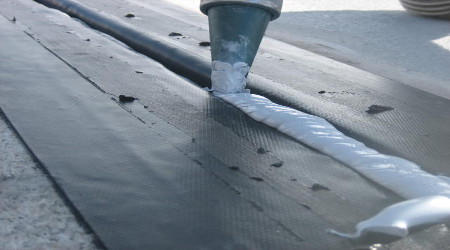
Hybrid sealants, a versatile class of sealants combining the properties of different types of sealants, have gained significant traction in various industries due to their superior performance and wide-ranging applications. In this comprehensive guide, we'll delve into the intricacies of hybrid sealants, exploring their types, advantages, applications, selection criteria, application techniques, maintenance, environmental impact, and future trends.
Hybrid sealants represent a groundbreaking innovation in the sealant industry. They blend the desirable characteristics of different sealant chemistries, such as polyurethane, silicone, and acrylic, to create a product that surpasses traditional sealants in terms of performance and durability. These sealants find applications in diverse sectors, including construction, automotive, marine, and more.

![]()
Types of Hybrid Sealants:
Polyurethane-based Sealants
Hybrid pu sealants offer exceptional adhesion, flexibility, and resistance to weathering. They are commonly used in construction for sealing joints and gaps in various substrates, providing a long-lasting protective barrier against moisture and environmental elements.
Silicone-based Sealants
Silicone-based hybrid sealants are renowned for their excellent weather resistance and thermal stability. They maintain their elasticity over a wide temperature range, making them ideal for outdoor applications where exposure to harsh conditions is a concern.
Acrylic-based Sealants
Acrylic-based hybrid sealants offer good adhesion and paintability, making them suitable for sealing and caulking applications in both interior and exterior settings. They are often preferred for their ease of application and compatibility with a wide range of substrates.
Advantages of Hybrid Sealants
Hybrid sealants offer several advantages over traditional sealants:
Superior Adhesion:
They form strong bonds with various substrates, ensuring long-term sealing performance.
Flexibility:
Hybrid sealants maintain their flexibility and elasticity, accommodating joint movement without cracking or crumbling.
Weather Resistance:
They withstand exposure to UV radiation, moisture, temperature fluctuations, and other environmental factors, preserving their integrity over time.
Applications of Hybrid Sealants
Hybrid sealants find extensive use in diverse industries:
Construction and Building Industry:
They are utilized for sealing expansion joints, window perimeters, curtain walls, and concrete structures.
Automotive Industry:
Hybrid sealants are employed in vehicle assembly for bonding body panels, windshield installation, and sealing seams to prevent water ingress.
Marine Industry:
They serve as marine sealants for sealing hulls, decks, windows, and hatches, providing watertight seals in marine environments.
How to Choose the Right Hybrid Sealant
When selecting a hybrid sealant, consider the following factors:
Compatibility with substrates
Desired performance characteristics (adhesion, flexibility, weather resistance)
Application method (manual, pneumatic, or caulking gun)
Environmental and regulatory requirements
Proper Application Techniques
To ensure optimal performance, follow these guidelines when applying hybrid sealants:
Surface Preparation:
Clean and dry the substrate thoroughly to remove dirt, dust, grease, and contaminants.
Application Methods:
Apply the sealant evenly using a caulking gun or pneumatic dispenser, ensuring complete coverage of the joint or gap.
Curing Time and Conditions:
Allow the sealant sufficient time to cure at the recommended temperature and humidity levels before subjecting it to stress or exposure to moisture.
Maintenance and Longevity
To maximize the longevity of hybrid sealants, follow these maintenance tips:
Regularly inspect sealed joints and gaps for signs of damage or deterioration.
Promptly repair any cracks or gaps to prevent water infiltration and structural damage.
Avoid using abrasive cleaners or harsh chemicals that may degrade the sealant over time.
Environmental Impact and Sustainability
As environmental awareness grows, the demand for eco-friendly sealant solutions is on the rise. Manufacturers are developing sustainable alternatives to traditional hybrid sealants, incorporating recycled materials and reducing the environmental footprint of production processes. Recycling programs for used sealant cartridges are also becoming more prevalent, contributing to resource conservation and waste reduction efforts.
Case Studies and Success Stories
Several real-world examples demonstrate the effectiveness and versatility of hybrid sealants:
Construction Projects:
Hybrid sealants have been instrumental in sealing joints and gaps in high-rise buildings, bridges, and infrastructure projects, ensuring structural integrity and weatherproofing.
Automotive Applications:
Automotive manufacturers rely on hybrid sealants to achieve watertight seals in vehicle assembly, contributing to vehicle safety and longevity.
Marine Sealant Solutions:
Hybrid sealants play a crucial role in maintaining the integrity of marine vessels, preventing water ingress and corrosion in challenging maritime environments.
Future Trends and Innovations
The future of hybrid sealants holds exciting possibilities, with ongoing research and development efforts focused on:
Enhancing performance characteristics such as adhesion, flexibility, and weather resistance.
Developing bio-based and renewable formulations to reduce environmental impact.
Exploring novel applications in emerging industries and niche markets.
Conclusion
Hybrid sealants offer a compelling combination of performance, versatility, and durability, making them indispensable in various industries. With superior adhesion, flexibility, and weather resistance, these innovative sealants provide reliable sealing solutions for construction, automotive, marine, and other applications. As technology continues to advance, hybrid sealants are poised to play a pivotal role in addressing evolving industry needs and sustainability challenges.
FAQs
Are hybrid sealants suitable for outdoor applications?
Yes, hybrid sealants, particularly silicone-based formulations, are well-suited for outdoor use due to their excellent weather resistance and UV stability.
Can hybrid sealants be painted over?
Acrylic-based hybrid sealants are paintable once fully cured, allowing for seamless integration with surrounding surfaces.
What is the typical lifespan of hybrid sealants?
The lifespan of hybrid sealants varies depending on factors such as substrate type, environmental conditions, and proper


























